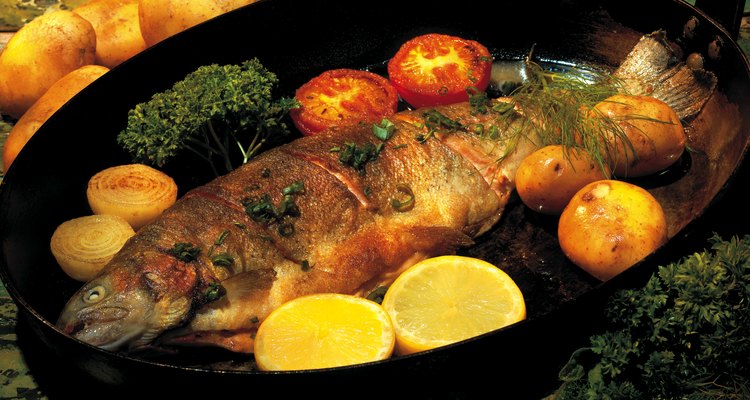
Brook trout are among the tastiest and most-prized pan fish. A smaller cousin of salmon, they live in cool, fast-running rivers and streams across most of North America. With no spines or heavy scales to be removed, they're also quick and easy to prepare for cooking. Most chefs and anglers take advantage of their fresh, mild flavor by preparing brook trout very simply.
Preparing the Trout
Step 1
Gut the trout by slitting open its belly from the vent or anus, just below its hind fins, all the way to the throat. Use just the tip of a sharp knife to avoid cutting open its stomach or intestines. Remove the entrails with your knife or a finger, then rinse the cavity thoroughly with cold, running water.
Step 2
Pat the trout dry with clean paper towels. If you want to cook the trout whole, it's now ready to use. The head can be removed or left on.
Step 3
Fillet the trout by making a vertical cut immediately behind the gills, then turning your knife horizontally and following the line of the spine all the way to the tail. Turn the trout over and repeat on the other side. Alternatively, butterfly the trout by making a cut on either side of the backbone to sever it from the ribs, without cutting through the skin. Reach under the spine with the tip of your knife and sever it from the flesh, then pull it out with your fingers.
Step 4
Trim the rib bones from the filleted or butterflied trout by laying your knife flat, and gliding it under the severed end of the bones. Make a long, slow cut with your knife, keeping it pressed against the underside of the bones. The entire plate of ribs and the membrane holding them together should come away in one piece. Repeat on the other side or for any remaining fillets.
Grilled or Pan-Seared Brook Trout
Step 1
Season brook trout fillets or butterflied trout lightly with salt and pepper or other flavorings, as desired. Season whole trout inside and out.
Step 2
Clean the bars of your grill carefully, and oil or spray them with high-temperature pan spray. Preheat the grill to medium-high heat. For pan-searing, place a heavy skillet over medium-high heat.
Step 3
Place the fillets or butterflied trout in an oiled fish grilling basket, and place them on the grill. If you're pan-searing the trout, add 1/2 tablespoon of oil to the hot skillet and put in your first few fillets or whole trout. Leave plenty of space between the portions and don't crowd the pan.
Step 4
Cook fillets or butterflied trout for 2 to 3 minutes on each side, until they're lightly browned and opaque at the thickest part of each fillet. Cook whole trout for 3 to 4 minutes per side, or until the flesh lifts easily from the backbone.
Baked Trout
Step 1
Preheat your oven to 425 degrees Fahrenheit. Arrange your fillets, butterflied trout or whole trout evenly on a parchment-lined baking sheet.
Step 2
Brush or spray the trout lightly with cooking oil, or brush them with melted butter for a richer flavor. Season them with salt and pepper, lemon, fresh herbs, or other flavorings as desired. Season inside the belly cavity of whole trout, and garnish the cavity with a lemon slice or fresh herbs if you wish.
Step 3
Bake fillets or butterflied trout for 7 to 10 minutes, depending on their size, until the thickest portion of the fillet is opaque when you cut into it with the tip of your knife. Whole trout require 12 to 15 minutes, depending on their thickness. They're done when the flesh lifts easily from the backbone.
Related Articles

How to Cook a Fresh Perch
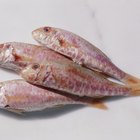
How to Clean Mullet
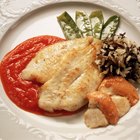
How to Clean Tilapia

Easy Way to Debone a Trout

How to Cook Pickerel in the Oven
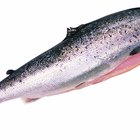
How to Cook Salmon Cheeks

How to Cook Trigger Fish

Fastest Way to Clean & Freeze Catfish
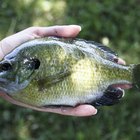
How to Cook Bluegill on the Grill

How to Cook Jackfish

How to Cook Saba Fish
How to Cook Bone-in Tilapia

How to Fillet a Goliath Grouper
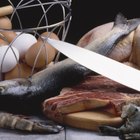
How to Devein Tiger Prawns

How to Grill a Trout Fillet

How to Cook Haddock on the Grill
How to Cook Sturgeon on the Grill

How to Clean Scallops

How to Pan Cook Shark
How to Cook Grouper in the Oven
References
- Professional Cooking; Wayne Gisslen
- The American Woman's Cookbook, Wartime Victory Edition; Ruth Berolzheimer (Ed.)
Tips
- To help prevent your trout portions from sticking to the grill, spray them lightly with pan spray. This is optional, but it can be helpful. They can be grilled successfully without using a basket, but the basket helps prevent your trout from breaking up as they're turned.
- Dust pan-seared whole or portioned trout lightly with flour before cooking them. The flour helps keep them from sticking to the pan and forms a crisp, golden crust.
- Whole trout are usually served bone-in, but they're easily deboned at the table. Simply slide a fork or butter knife down the spine of the trout, then lift the fillet from the skeleton. The ribs should release cleanly. Turn the trout and repeat the procedure on the other side.
- Most cooks use these two common and tasty ways to prepare fresh brook trout, but there are many others. For example, they're also very good when broiled, poached or baked in a parchment paper envelope.
Writer Bio
Fred Decker is a trained chef and prolific freelance writer. In previous careers, he sold insurance and mutual funds, and was a longtime retailer. He was educated at Memorial University of Newfoundland and the Northern Alberta Institute of Technology. His articles have appeared on numerous home and garden sites including GoneOutdoors, TheNest and eHow.
Photo Credits
Stockbyte/Stockbyte/Getty Images